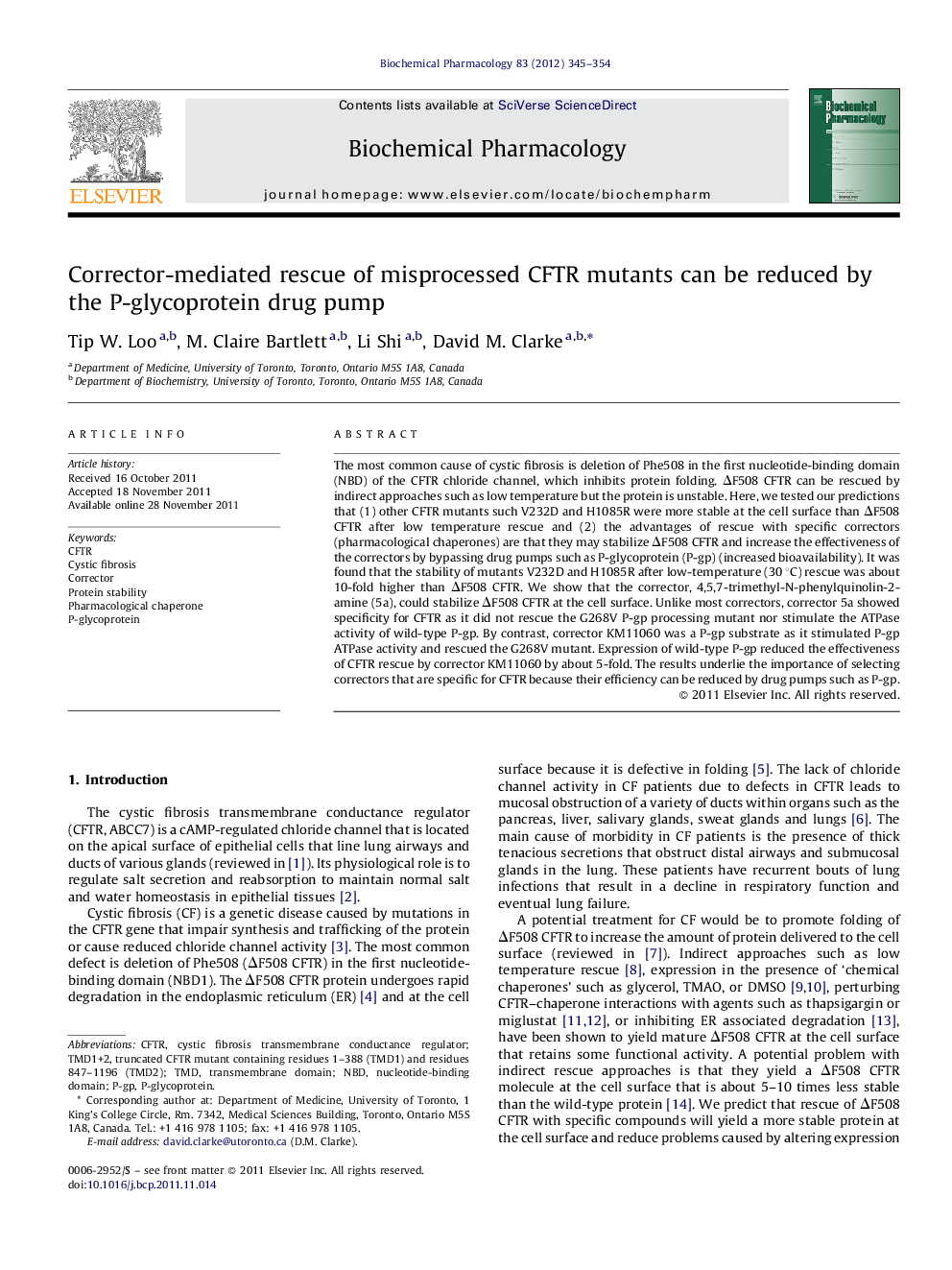| Article ID | Journal | Published Year | Pages | File Type |
|---|---|---|---|---|
| 2512927 | Biochemical Pharmacology | 2012 | 10 Pages |
The most common cause of cystic fibrosis is deletion of Phe508 in the first nucleotide-binding domain (NBD) of the CFTR chloride channel, which inhibits protein folding. ΔF508 CFTR can be rescued by indirect approaches such as low temperature but the protein is unstable. Here, we tested our predictions that (1) other CFTR mutants such V232D and H1085R were more stable at the cell surface than ΔF508 CFTR after low temperature rescue and (2) the advantages of rescue with specific correctors (pharmacological chaperones) are that they may stabilize ΔF508 CFTR and increase the effectiveness of the correctors by bypassing drug pumps such as P-glycoprotein (P-gp) (increased bioavailability). It was found that the stability of mutants V232D and H1085R after low-temperature (30 °C) rescue was about 10-fold higher than ΔF508 CFTR. We show that the corrector, 4,5,7-trimethyl-N-phenylquinolin-2-amine (5a), could stabilize ΔF508 CFTR at the cell surface. Unlike most correctors, corrector 5a showed specificity for CFTR as it did not rescue the G268V P-gp processing mutant nor stimulate the ATPase activity of wild-type P-gp. By contrast, corrector KM11060 was a P-gp substrate as it stimulated P-gp ATPase activity and rescued the G268V mutant. Expression of wild-type P-gp reduced the effectiveness of CFTR rescue by corrector KM11060 by about 5-fold. The results underlie the importance of selecting correctors that are specific for CFTR because their efficiency can be reduced by drug pumps such as P-gp.
Graphical abstractHigher concentration of corrector is required for rescue of CFTR in the presence of P-glycoprotein.Figure optionsDownload full-size imageDownload as PowerPoint slide
